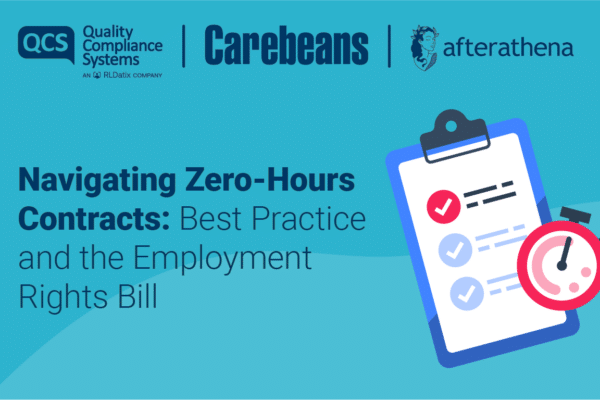
I first met Margaret in 1988 when her elderly mother died and her father was too ill to care for her. Before this, nobody in the local social services or health community knew she existed. Margaret was in her late fifties and a lovely, chatty, bright lady. Her independence skills were limited to domestic tasks because she had never been out of her home aside from occasional trips to visit family or to the local shops. She had never been to school.
Margaret’s dad was taken into a care home and it was difficult to know what would happen to her. Because of her limited life experience and vulnerability, supported living was not possible. There were no available group home places and besides, the shock to her would be detrimental.
I was asked to assess Margaret’s independence, awareness and understanding to help find a suitable place for her to live. We spent time together visiting local landmarks, using shops and public transport and exploring the community together.
I wanted to find out how much Margaret knew about her situation and so engaged her in conversation about her childhood, her life and times. I asked her if she knew about school. She replied that she had not been allowed to go. I asked why not, and she told me that local children in her street had teased and tormented her as a little girl, so her dad kept her home.
I asked her why she thought the children had tormented her. Margaret smiled at me kindly, touched my arm and whispered “ its because I’m a mongol, dearie”
We know so much more about this condition now than in the war years, when people with Down’s Syndrome like Margaret would largely be institutionalized and it was very rare to see them living in the community. But considering how much wiser we are, there are still some mysteries associated with the condition and we still have lots to learn to dispel the myths.
What is Down’s Syndrome?
Down’s Syndrome is probably the most recognizable condition associated with learning disability, first described by John Langdon Down, an English physician, in 1862. In 1959, the cause of Down’s Syndrome was identified. Early descriptions of people affected included the label ‘Mongol’ due to the characteristic facial appearance. Happily, we no longer use this term.
What causes it?
This was found to be due to a genetic disorder, where the 21st chromosome pair has an additional, or part, third copy. This can be diagnosed during pregnancy through ultrasound examination and sampling amniotic fluid. After the baby is born, blood tests can confirm the diagnosis.
How common is it?
There are around 60,000 people in the UK diagnosed with Down’s Syndrome and around 750 babies are born with the condition every year in this country.
It is the most common chromosomal abnormality in humans, found in about 1 of every 1000 babies born every year.
Do older mothers have a higher risk of Down’s Syndrome babies?
Maternal age is linked to a higher number of cases for unknown reasons; however more babies with DS are born to mothers under 35, because fertility is higher in this group.
Is it always associated with Learning Disability?
Most people with Down’s Syndrome have some degree of intellectual disability; the average IQ in adulthood is 50, which is equivalent to a 9 year old. However, this varies widely.
Do all people with Down’s Syndrome have the same features?
Physical characteristics of Down’s Syndrome are stunted growth, low muscle tone, a narrow roof of the mouth and a large, protruding tongue. There are typical facial and other physical features associated with the condition, but people with Down’s Syndrome look like their family as much or more than they look like each other!
Are there health problems linked to the condition?
Health issues associated with the condition include heart defects and breathing problems. Thyroid problems and Type 1 diabetes are also linked. Hypertension is rarer than in the general population. Low muscle tone is thought to contribute to hip instability in around 28% of cases which can lead to arthritis and mobility problems.
Do people with Down’s Syndrome have problems with speech?
Speech problems are found in between 10 and 45% of people with Down’s Syndrome; these are often stammers, rapid or babbling speech, or difficulty in pronouncing words. Understanding of speech is often better than use of it.
Hearing problems occur in around 50 to 90% of people with Down’s Syndrome and is usually the result of infections or build up of fluid in the ear canals. Sight can be affected by squints, cataracts and glaucoma, treated or helped with spectacles.
Do people with Down’s Syndrome live shorter lives?
Life expectancy for people with Down’s Syndrome is lower than the general population, although has increased significantly over recent years. In the 1980s the average life expectancy was 25. Many people now live well into their 60s.
What about dementia?
Dementia is often found earlier in people with the condition, some as young as 30. By the age of 50, studies have found over half of people with Down’s Syndrome are affected by dementia.
Are people with Down’s Syndrome always happy?
No more so than you or I – people with DS have the same moods as everyone else and depression is as much of a feature as with the rest of the population.
Are they usually stubborn?
As before, there is no personality ‘type’ linked with Down’s Syndrome. Some people may exhibit behaviour that appears stubborn because they do not understand what is expected of them. Often in DS, higher levels of competence are assumed due to the ability of the individual to communicate. This can be very frustrating for them.
Where can I find out more?
Lots of places – but I recommend
The Down’s Syndrome Association http://www.downs-syndrome.org.uk
The Downs Syndrome Research Foundation www.dsrf-uk.org
Just Like You – Downs Syndrome http://www.justlikeyoufilms.org/films/
oh – and if you want to have your day lifted, my friends 12 year old daughter who has Down’s Syndrome heartily recommends this –
http://www.youtube.com/watch?v=aCJQAm_uKyg&list=RDaCJQAm_uKyg
ENJOY!





